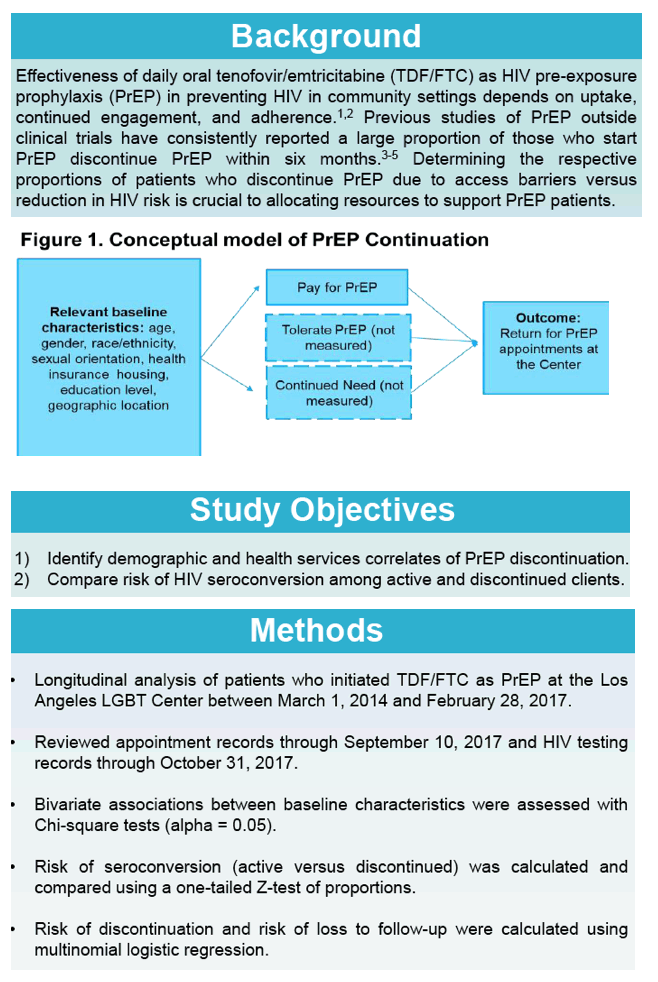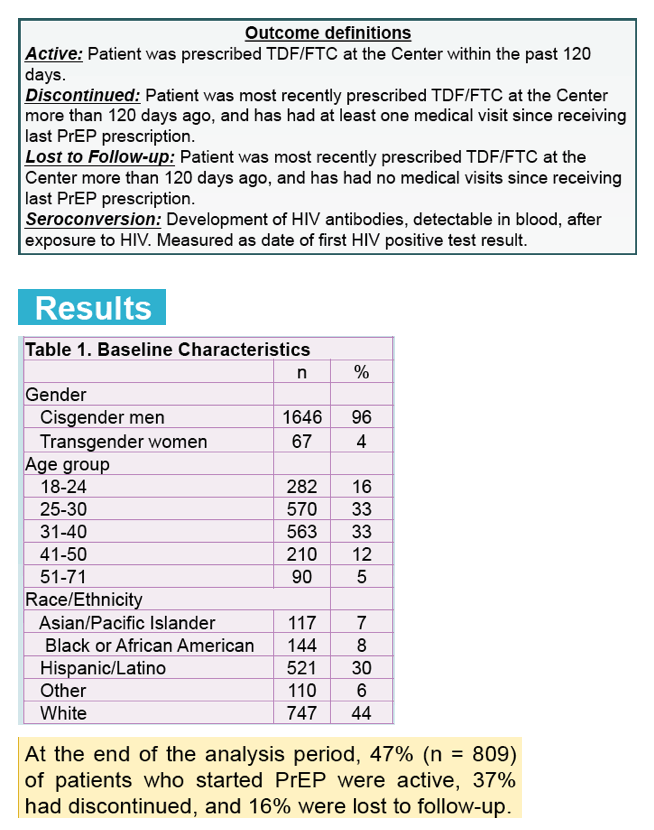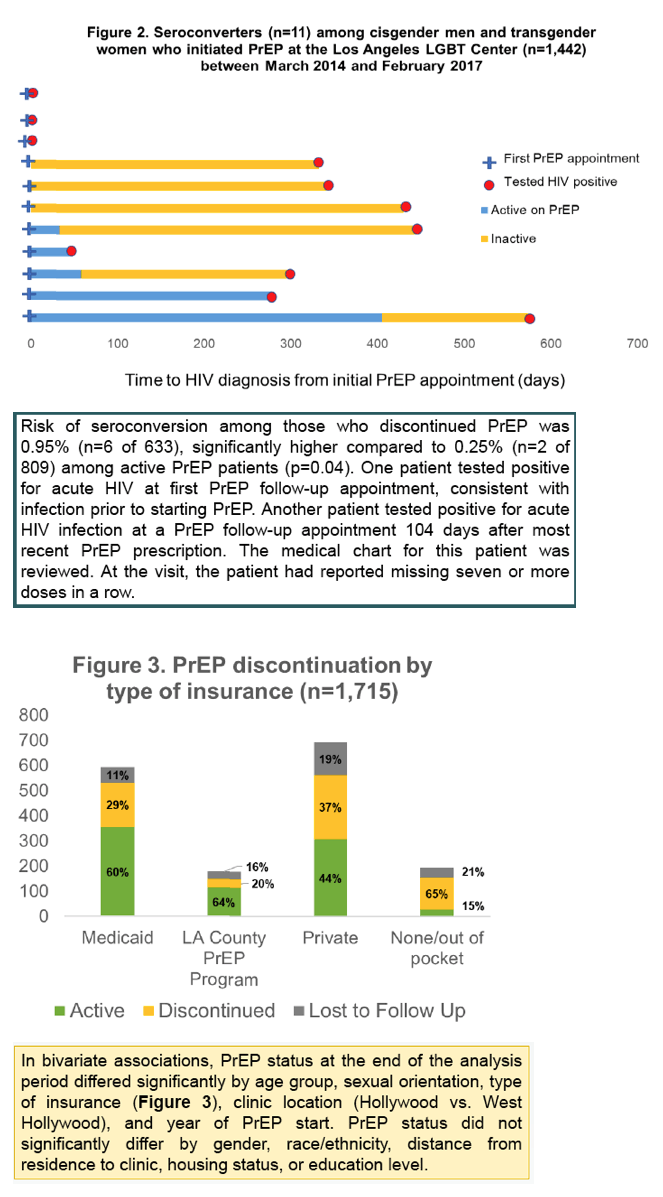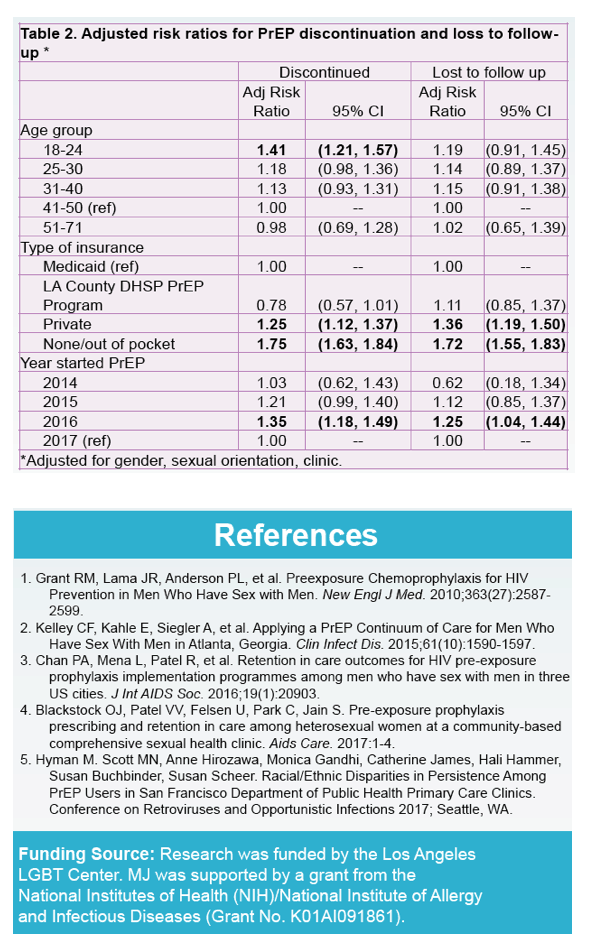 |
 |
 |
| |
High Discontinuation of Pre-Exposure Prophylaxis Within Six Months of Initiation
|
| |
| |
Reported by Jules Levin
CROI 2018 March 4-7 Boston MA
Chelsea L. Shover, PhD(c)1,2; Marjan Javanbakht, PhD, MPH1; Steven Shoptaw, PhD3; Robert K. Bolan, MD 2 ; Pamina M. Gorbach, MHS, DrPH1
1. Department of Epidemiology, Fielding School of Public Health, University of California, Los Angeles; 2. Los Angeles LGBT Center;
3. Department of Family Medicine, UCLA

Program Abstract:
The study was conducted to characterize longitudinal use of HIV pre-exposure prophylaxis (PrEP) at a Federally Qualified Health Center in Los Angeles, CA. We aimed to examine duration of PrEP use, and sociodemographic characteristics associated with discontinuation. We hypothesized that most patients would use PrEP for at least six months, and most of those who discontinued would do so without returning for a first follow-up appointment.
Records were obtained from patients prescribed tenofovir/emtricitabine as PrEP at the Los Angeles LGBT Center prior to March 1, 2017. 'Active' PrEP patients were defined as those who had a PrEP prescription within the past 120 days. Among those not active, last visit with PrEP prescription was a proxy for discontinuation of PrEP use. Patients were followed through the earliest of discontinuation or August 31, 2017. Potential demographic correlates of discontinuation were analyzed using logistic regression.
During the study period, 1,764 individuals initiated PrEP. The majority were cisgender men (94%) or transgender women (4%); White (44%), Hispanic (30%), or Black (8%); over 30 (55%). Fifteen percent (n=271) did not return for a follow-up appointment within 120 days of initial visit. By three months, 32% (n=572) discontinued, and 45% (n=802) discontinued by six months. A remaining 55% (n=972) continued attending PrEP follow-up appointments for at least six months. Black race/ethnicity (AOR: 1.6, 95% CI 1.0 2.5) and bisexual orientation (AOR: 1.8, 95% CI 1.2, 2.6) were associated with greater odds of discontinuation at baseline compared to white race/ethnicity or gay sexual orientation, respectively. Discontinuation by six months was associated with age, but not gender, sexual orientation, or race/ethnicity. Compared to those over 50, those between 18-24 (AOR = 2.6, 95% CI 1.6, 4.2); 25-29 (AOR = 1.9, 95% CI 1.3, 2.9), or 30-39 (AOR = 1.5, 95% CI 1.0, 2.3) had higher odds of discontinuing by six months.
A substantial proportion of PrEP patients stopped attending follow-up visits within six months of initiation, with differential discontinuation by age, race/ethnicity, and sexual orientation. Further investigation could distinguish between PrEP discontinuation due to changed HIV risk versus barriers to continuation such as health insurance, competing priorities, or medication factors. Such analysis could improve PrEP implementation in community settings.




|
| |
|
 |
 |
|
|